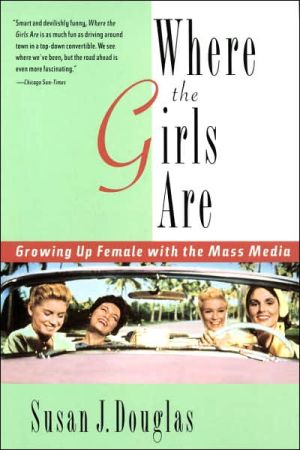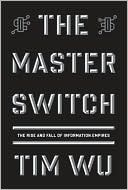Where the Girls Are: Growing up Female with the Mass Media
Media critic Douglas deconstructs the ambiguous messages sent to American women via TV programs, popular music, advertising, and nightly news reporting over the last 40 years, and fathoms their influence on her own life and the lives of her contemporaries. Photos.\ \ \ Media critic Douglas deconstructs the ambiguous messages sent to American women via TV programs, popular music, advertising, and nightly news reporting over the last 40 years, and fathoms their influence...
Search in google:
Media critic Douglas deconstructs the ambiguous messages sent to American women via TV programs, popular music, advertising, and nightly news reporting over the last 40 years, and fathoms their influence on her own life and the lives of her contemporaries. Photos. Publishers Weekly In this insightful study of how the American media has portrayed women over the past 50 years, Douglas ( Inventing American Broadcasting: 1899-1922 ) considers the paradox of a generation of women raised to see themselves as bimbos becoming the very group that found its voice in feminism. Modern American women, she suggests, have been fed so many conflicting images of their desires, aspirations and relationships with men, families and one another that they are veritable cultural schizophrenics, uncertain of what they want and what society expects of them. A single image--Diana Ross of the Supremes, for example, or Gidget from the popular sitcom--can send mixed signals, Douglas shows, at once affirming a woman's right to a voice and cautioning her not to go too far. Thus the media is often both a liberating and an oppressive force. Douglas is particularly attentive to the ways pop culture's messages have responded to shifting social and economic imperatives, including the feminist movement itself. While she asserts that pop culture can have a profound impact on one's self-perceptions, she also stresses that women, by the example of their own lives, have changed--mostly for the better--the way the media represents them. Author tour. (May)
Introduction31Fractured Fairy Tales212Mama Said433Sex and the Single Teenager614Why the Shirelles Mattered835She's Got the Devil in Her Heart996Genies and Witches1237Throwing Out Our Bras1398I Am Woman, Hear Me Roar1639The Rise of the Bionic Bimbo19310The ERA as Catfight22111Narcissism as Liberation24512I'm Not a Feminist, But...269Epilogue295Acknowledgments309Notes313Index327
\ Publishers Weekly - Publisher's Weekly\ In this insightful study of how the American media has portrayed women over the past 50 years, Douglas Inventing American Broadcasting: 1899-1922 considers the paradox of a generation of women raised to see themselves as bimbos becoming the very group that found its voice in feminism. Modern American women, she suggests, have been fed so many conflicting images of their desires, aspirations and relationships with men, families and one another that they are veritable cultural schizophrenics, uncertain of what they want and what society expects of them. A single image--Diana Ross of the Supremes, for example, or Gidget from the popular sitcom--can send mixed signals, Douglas shows, at once affirming a woman's right to a voice and cautioning her not to go too far. Thus the media is often both a liberating and an oppressive force. Douglas is particularly attentive to the ways pop culture's messages have responded to shifting social and economic imperatives, including the feminist movement itself. While she asserts that pop culture can have a profound impact on one's self-perceptions, she also stresses that women, by the example of their own lives, have changed--mostly for the better--the way the media represents them. Author tour. May\ \ \ \ \ Library JournalIn the current reconsideration of the popular culture of the baby boomers, the cultural contribution of men is emphasized. The neglect of the cultural history of women from the 1950s, 1960s, and 1970s worries critic Douglas. In an engaging personal tour through the landscape of television, popular music, new media, and advertising, she retrieves that history while exploring the mixed messages the media delivered to women. She claims that popular girl singing groups like the Shirelles offered new possibilities for female assertiveness, while the television show Bewitched portrayed a woman using magic to escape dull domestic chores. Emphasizing complexity, she relates the ambivalent treatment of women in popular culture to the evolution of the women's liberation movement. Douglas, a professor of media studies at Hampshire College and author of Inventing American Broadcasting: 1899-1922 LJ 11/1/87, translates intricate academic ideas into witty and accessible prose. This entertaining book fills a gap in cultural history and belongs in public and academic libraries.-Judy Solberg, Univ. of Maryland Libs., College Park\ \








